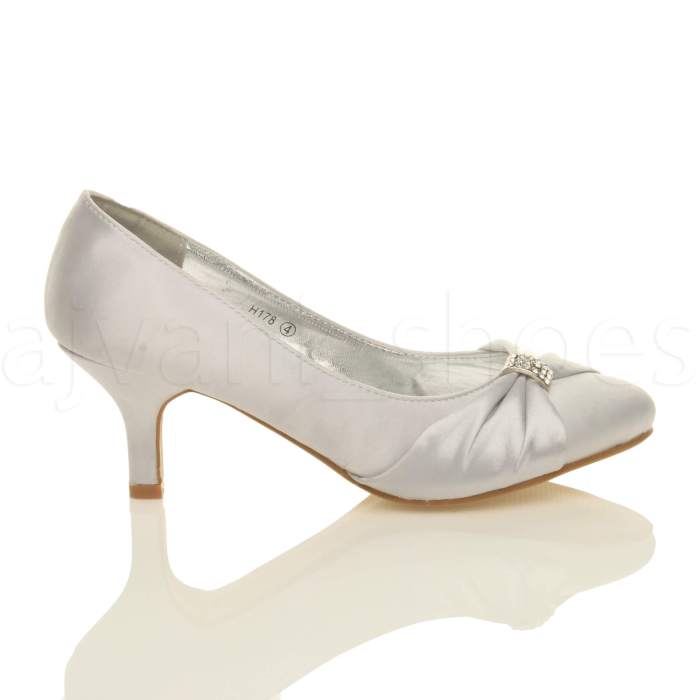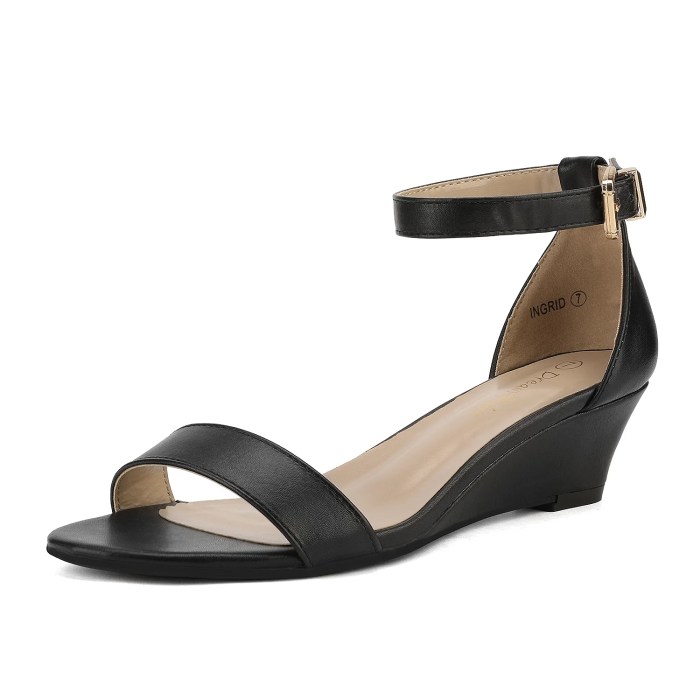Orthopedic Wedding Shoes: A Guide to Comfort and Style: Orthopedic Dress Shoes For Wedding Low Heel
Orthopedic dress shoes for wedding low heel – Choosing wedding shoes is a crucial decision; they need to be both beautiful and comfortable enough to wear for hours. This guide focuses on orthopedic low-heeled options, ensuring you can dance the night away without sacrificing style or foot health.
Defining the Ideal Orthopedic Wedding Shoe
The perfect orthopedic wedding shoe combines elegance and support. Key features include a low, stable heel (ideally under 2 inches), a wide, supportive base, and ample cushioning. Materials should be both luxurious and breathable, such as high-quality leather or suede. Design elements should prioritize comfort without compromising the shoe’s aesthetic appeal; think subtle embellishments and clean lines.
Comfort and Support Features

Source: cloudfront.net
Several insole technologies contribute to superior comfort. Memory foam insoles conform to the foot’s shape, providing excellent cushioning. Gel insoles offer shock absorption, reducing pressure points. Comparing these, memory foam excels in conforming to individual foot shapes, while gel insoles are better for impact absorption. Optimal arch support is crucial; shoes with a well-defined arch support cradle the foot, preventing strain and fatigue.
Adequate cushioning minimizes impact and distributes pressure evenly across the foot, promoting blood circulation and preventing discomfort.
Style and Design Considerations
Numerous styles can incorporate orthopedic features without sacrificing aesthetics. The following table showcases examples:
| Style Name | Heel Height | Material | Key Orthopedic Features |
|---|---|---|---|
| Classic Pump | 1.5 inches | Leather | Cushioned insole, arch support |
| Ankle Strap Sandal | 1 inch | Suede | Memory foam insole, wide toe box |
| D’Orsay Flat | 0.5 inches | Satin | Removable insole for orthotic inserts, flexible sole |
| Pointed Toe Slingback | 1.75 inches | Leather | Gel insole, metatarsal support |
Three distinct low-heeled orthopedic wedding shoe designs could include: a classic ivory satin pump with a cushioned insole and subtle embellishments; a delicate ankle-strap sandal in blush pink suede with memory foam and arch support; and a modern pointed-toe flat in ivory leather with a flexible sole and removable insole for custom orthotics.
Embellishments such as delicate beading, subtle bows, or small crystals can add visual interest without compromising support. Placement is key; avoid embellishments that interfere with the foot’s natural movement or put pressure on sensitive areas.
Finding comfortable yet stylish footwear for a wedding can be tricky, especially when you need orthopedic dress shoes with a low heel. Consider the overall aesthetic; a beautiful olive dress, perhaps one from this selection of olive dresses for wedding , would pair well with a sophisticated, low-heeled shoe. The right orthopedic shoes ensure you’ll dance the night away without sacrificing comfort or style.
Brands and Availability
Several brands prioritize comfort and style. Vionic offers a wide range of orthopedic shoes with stylish designs. Dansko is known for its comfortable clogs and shoes, including some wedding-appropriate styles. Naturalizer specializes in comfortable footwear, with many options suitable for weddings. These brands can be found at online retailers like Zappos, Amazon, and specialty orthopedic shoe stores.
Offline, many shoe stores carry at least one of these brands or similar orthopedic options. The price range for orthopedic wedding shoes typically varies from $100 to $300, depending on the brand, materials, and design.
Care and Maintenance, Orthopedic dress shoes for wedding low heel
Proper care extends the life of orthopedic wedding shoes. After each wear, gently clean the shoes using a soft cloth and appropriate cleaner for the material (leather cleaner for leather, suede brush for suede). Store shoes in a cool, dry place, ideally using shoe trees to maintain their shape. Regularly inspect for any damage and address promptly.
Addressing Specific Foot Problems
Orthopedic features can help mitigate common foot problems. Shoes with a wider toe box accommodate bunions, while good arch support and cushioning alleviate plantar fasciitis. Proper fitting is essential; shoes should fit snugly but not restrict blood flow. For high arches, shoes with significant arch support and cushioning are crucial. A podiatrist’s consultation can guide shoe selection for specific conditions.
Visual Representations

Source: walmartimages.com
Imagine three distinct designs: First, a classic ivory satin pump with a 1.5-inch block heel, featuring a cushioned insole and subtle crystal embellishments on the heel. The sole is made of durable rubber for grip. The second design is a blush pink suede ankle-strap sandal with a 1-inch wedge heel, showcasing memory foam and arch support. The straps are elegantly designed to secure the foot comfortably.
The third, a sleek ivory leather pointed-toe flat with a flexible sole and removable insole. This style emphasizes clean lines and modern elegance.
Satin creates a luxurious, formal look, while leather provides durability and a classic feel. Suede offers a softer, more delicate aesthetic. Visual elements, such as the heel shape, the type of embellishments, and the overall silhouette, contribute to the shoe’s elegance and sophistication.
Essential Questionnaire
What are the common signs that I need orthopedic shoes?
Persistent foot pain, swelling, or discomfort during or after prolonged standing or walking are common indicators. Bunions, plantar fasciitis, or other foot conditions may also necessitate orthopedic footwear.
How do I determine the correct size for orthopedic wedding shoes?
Measure your feet at the end of the day when they are slightly swollen. Consider getting professionally fitted to ensure a proper fit, especially with orthopedic shoes. Allow for extra space in the toe box.
Can I wear orthopedic shoes with different types of wedding attire?
Yes, many orthopedic shoes are designed to be stylish and versatile, complementing various wedding attire styles. Look for designs that match your wedding’s overall aesthetic.
How often should I replace my orthopedic wedding shoes?
The lifespan depends on frequency of use and material. However, it’s generally recommended to replace them every 6-12 months or when you notice significant wear and tear affecting support and comfort.
